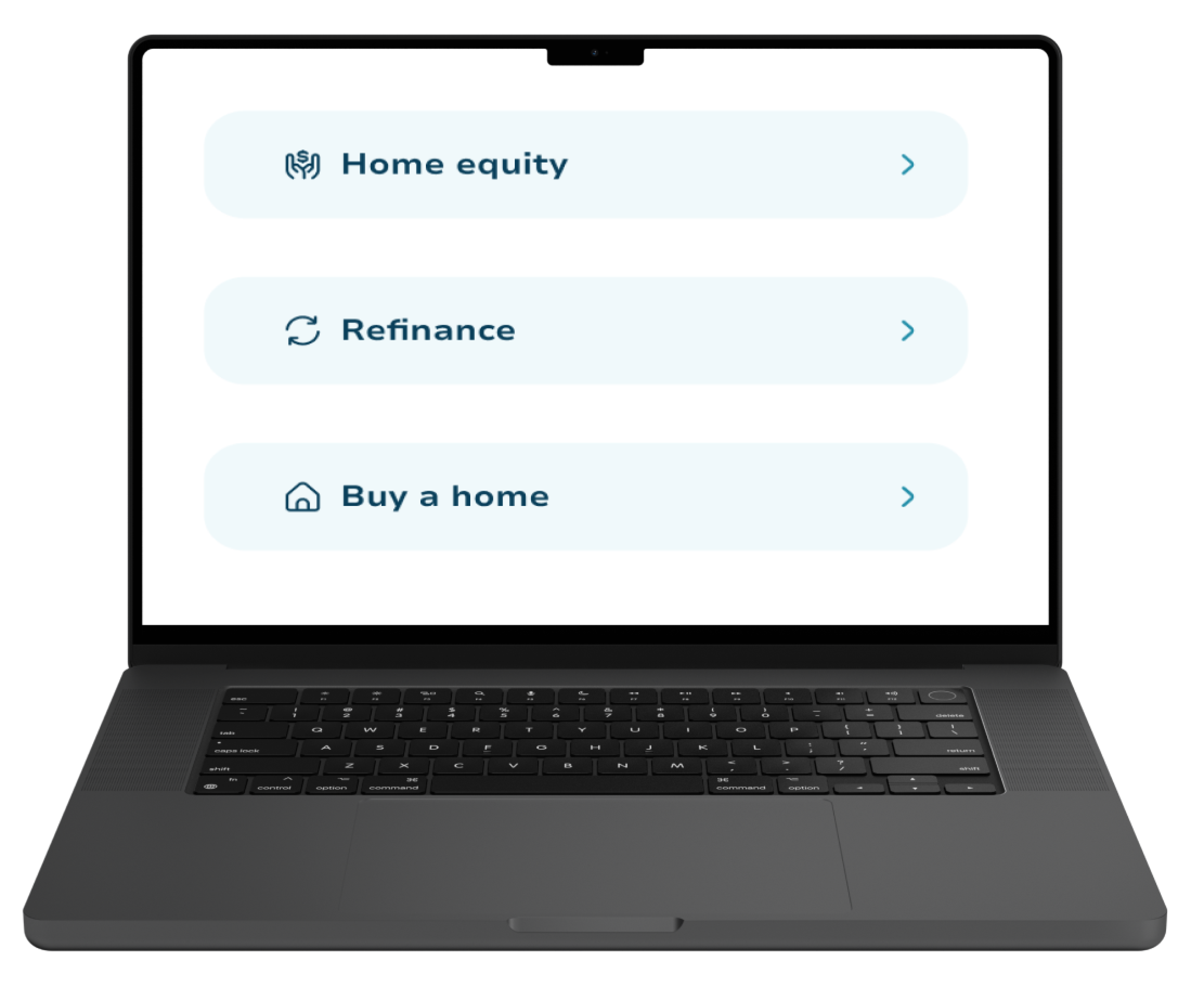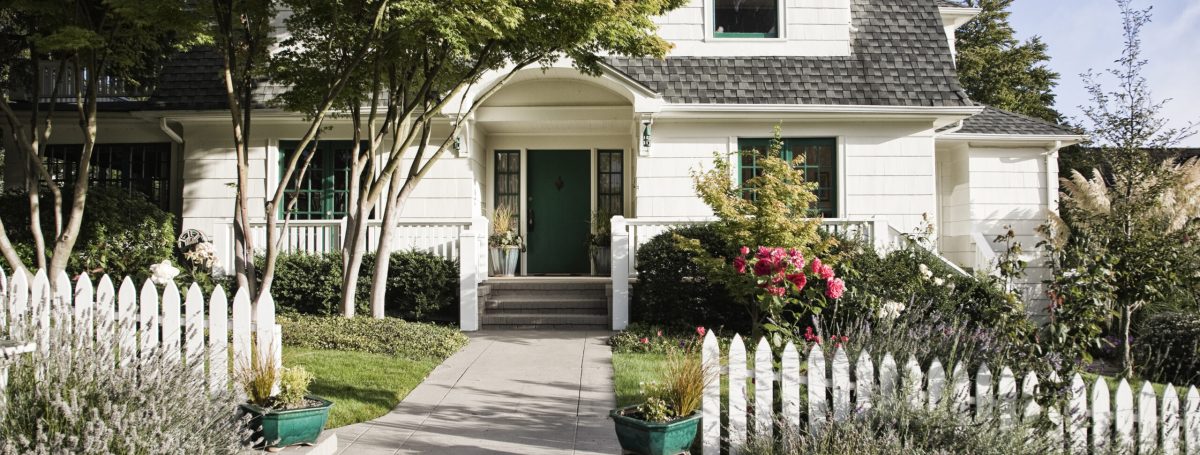A HELOC, or home equity line of credit, is a great way to draw cash out of your home’s value. They allow you to flexibly use your home’s equity, which can be a great tool in tackling tough financial challenges like credit card or educational debt, medical expenses, home repair and renovations, and more.
Quick Summary
HELOCs allow you to borrow from the value you own in your home. Unlike other mortgage types, cash can be borrowed in varying increments, granting home equity lines of credit unrivaled borrowing flexibility that can rival a credit card.
HELOCs are ideal for extended home improvement projects or for debt consolidation.
Key requirements: Most lenders require applicants to have a credit score above 620, at least 15% to 20% owned home equity, and a 43% or lower debt-to-income ratio.
Tips: Home equity lines of credit are best used to build wealth. Use one to improve your home, consolidate your higher-interest debts, or as a down payment for another property.
What is a Home Equity Line of Credit?
A home equity line of credit is a type of second mortgage that borrows from the value of your home that you own. Your home is used as collateral to secure the loan, so lenders can offer rates closer to standard mortgages than other personal, unsecured loans or credit cards. However, it’s important to remember that because your home is the main source of the loan’s security, failure to pay off your HELOC could result in home foreclosure.

How Long Does a HELOC Last?
You can use a HELOC to borrow cash multiple times over an extended period. This draw period lasts several years, typically 10 years. Your home equity determines the maximum amount you can borrow at once. At the end of the HELOC draw period, you’ll be expected to pay back the loan with interest with a repayment schedule similar to a mortgage. The repayment period typically lasts 5 to 30 years.
What is the Benefit of a HELOC?
Because of the extended draw period, home equity lines of credit can be used in more ways than other mortgage loan types. They function similarly to a credit card, allowing you to draw funds and then pay them off, with the loan maximum acting as your credit limit.
Another source of flexibility is how you can use a HELOC. Unlike a normal mortgage loan, you can use withdrawn HELOC cash for any desired purpose. Typical uses include debt consolidation and home improvement projects.
Do you know your current monthly mortgage payment? Find out for free with our mortgage calculator.
How Much Can You Borrow with a HELOC?
Determining your available home equity is straightforward. Simply subtract the amount you owe on your mortgage from your home’s value. That sum is your owned home equity. Many lenders allow you to borrow around 80% to 85% of your owned equity.
For example, let’s say you own a house worth $500,000. You have paid off some of your mortgage and now owe $400,000. Therefore, your owned equity is $100,000. The lender will allow you to borrow up to 80% of that value, or $80,000.
Need assistance with knowing how much of a loan you can take out on your current home? Check out our free home equity calculator.

HELOCs for Larger Purchases
HELOCs allow you to withdraw funds from your equity, pay them off, and borrow again. You can borrow up to the loan’s maximum, pay that off, and then borrow up to the maximum again. This effectively means you can borrow beyond your available equity with a HELOC, but remember you would need to pay off what you borrowed before you can do so.
So, if you open your HELOC and immediately borrow a maximum of $80,000 for a major home project, you must pay off that withdrawal before the draw period ends. Then you can borrow $80,000 again and pay it off over the extended repayment period, or even repeat the process. In this example, you could borrow $160,000 in total, far above your initial limit of $80,000.
HELOCs for Smaller Purchases
However, a HELOC is just as useful when borrowing smaller amounts. Even with a maximum of $80,000, you could borrow a smaller sum for smaller projects. For example, you want to remodel your bathroom and paint a bedroom, which costs $5,000. You still have $75,000 to draw from and don’t need to continue borrowing. Use a HELOC to borrow as little or as much as you need. With a larger loan, you wouldn’t have this flexibility.
Therefore, HELOCs operate similarly to credit cards, with the equity maximum functioning like your credit limit. This non-structured withdrawal and payment schedule is a big reason why HELOCs can be so useful.
HELOC Rates in 2025
HELOC rates often vary by lender. Rates are based on an industry-standardized value called the prime rate, which is calculated by federal and private banking institutions. They generate the HELOC prime rate based on overall economic conditions, mortgage rates, inflation calculations, and more. The prime rate is used to determine home lending, credit card, and personal loan rates, as well as those of other types of loans and credit lines

Lenders apply a margin to the prime rate, calculated based on the applicant’s financial condition and credit history. The sum of this margin plus the prime rate is the total home equity loan rate you will be asked to pay.
For example, as of January 2025, the prime rate is 7.5%. After a financial inquiry, the lender could set your interest margin at 1.5%. Thus, you would be expected to pay the total HELOC rate of 9%.
Contact MyMortgageMarketplace for advice on creating a plan for a home equity line of credit and to find the loan you need at the rate you want.
Advantages
- Predictable monthly payments make budgeting easier.
- Ideal for those planning to stay in their home long-term.
- Best For: Debt consolidation or major home improvements.
Ways to Use a Home Equity Line of Credit
Homeowners can use cash from a HELOC however they’d like with no strict usage restrictions. However, HELOCs are best used to build wealth or improve financial health. Purchases that can’t be recouped aren’t the best use of HELOC funds.
One of the best ways to use a home equity line of credit is to consolidate debt. HELOC rates are secured by your home, meaning they are likely favorable compared to unsecured debt, like credit card, personal loan, medical debt, or student loan rates.
Transferring unsecured debt to a more stable loan type can help you save a significant amount of money. This is why understanding your financial situation and options is so important.
Another common use of a HELOC is for home repair, renovation, or other projects that can add to your home’s value. Interest from a home equity line of credit can be tax-deductible if the funds are used for home improvement.
Advantages
- Predictable monthly payments make budgeting easier.
- Ideal for those planning to stay in their home long-term.
- Best For: Buyers looking to consolidate debt or build wealth.
HELOC Requirements
HELOC practices tend to vary by lender, but common requirements include:
- At least 15% to 20% home equity
- A credit score of at least 620
- 43% or lower debt-to-income ratio
Your lender may require a home appraisal to confirm your home’s fair market value. This allows them to determine how much you’re eligible to borrow.


HELOC Pros & Cons
Your financial situation is the biggest factor in determining if you should use a home equity line of credit. HELOCs involve leveraging your home as collateral, so you should review several options and their benefits and drawbacks before committing to any single home finance plan.
Pros
- You can use whatever amounts of your accessible equity you need over the draw period.
- Home equity loan rates are often significantly lower than credit card or personal loan rates because the loan is secured by using your house as collateral.
- If your home’s primary mortgage rate is lower than current rates, you won’t have to lose those rates by refinancing or picking up a second mortgage.
- Interest on home equity loans for home improvement and renovation can be deducted from taxes.
- Because you can draw small cash amounts over the HELOC’s lifetime, they work well for less expensive home improvements or ones with incremental costs.
Cons
- You may get used to lower costs during the draw period and be overwhelmed with an abrupt rate increase when the repayment period begins.
- Your monthly rate could abruptly increase during the draw or repayment period, dramatically increasing your HELOC costs.
- While it helps to lower rates, using your home as the loan’s collateral may put it in danger of foreclosure.
- Large loans like high-value HELOCs or mortgages often require a 2% to 5% closing cost fee.
- If you sell your home before the loan is repaid, you’ll owe the remaining balance.
HELOCs vs Home Equity Loans
Home equity loans are the other main way to access your home’s cash value. They’re another type of second mortgage, but unlike HELOCs, home equity loans pay out a single, larger lump-sum loan.
A home equity loan can provide a larger lump sum of cash but is often set on a fixed repayment schedule with rates locked when the loan is issued. This means you’ll have a set monthly payment. If you’d prefer structure, some fixed-rate HELOCs are available.
Home equity loans have a hard limit on total draw value, and you are paid the entire lump sum when the loan is issued. You won’t have the same flexibility as a HELOC, but you can access much more cash. Home equity loans also typically have slightly better interest rates than HELOCs.
Final Thoughts
A HELOC is a great way to draw cash from your home’s value. You can use one to add value to your home through improvements or improve your financial stability by consolidating high-interest debts. HELOC rates can be significantly lower than credit cards or other debt because your home is used as security. However, you could foreclose on your house if loans aren’t repaid. This is why you must use a HELOC carefully and understand the financial obligations of a secondary home loan.
As experts in the home finance market, MyMortgageMarketplace is here to help you develop your lending plan. Contact us today for more information on HELOCs and to see if they are the right choice for your financial situation.

I appreciate the breakdown of closing costs—it’s something I hadn’t considered before. Great read!

Sammy P
Queens, NY

5/5

Great article! I didn’t realize how important it is to budget for maintenance and closing costs. Very helpful!

Jeremy M
Georiga, MD

5/5

This was super insightful! The tips on saving for a down payment cleared up a lot of confusion for me.

Tania N
Towns, CA

5/5


FAQ
What is the difference between a HELOC and a home equity loan?
+The major difference between HELOCs and home equity loans is the lending and repayment structure. A HELOC allows multiple smaller draws over an extended period, typically 10 years, while a home equity loan pays in a single lump-sum cash payment with a structured repayment structure.
What percentage of home equity can you borrow in a HELOC?
+Most lenders will allow you to borrow up to 80% to 85% of your owned home equity.
Can a HELOC be used for anything?
+HELOC withdrawals can be used for any purpose, though they’re usually best for debt consolidation or home improvement.
Can a HELOC be used as a down payment?
+You can use a HELOC as a down payment on a second home or other property, but remember you’ll need to pay back the loan’s entire value if you sell the property with the HELOC on it.
What is the difference between a HELOC and a second mortgage?
+A HELOC is a second type of mortgage. The only real difference between the two is the purpose of the loan. HELOCs are more narrow in scope because they can only be used to access home equity value.
Can you use home equity to consolidate debts?
+Debt consolidation is one of the best uses for HELOCs. Reconciling credit card debt or other personal debts with unfavorable rates can be a great use of home equity. HELOCs often offer significantly better interest rates than credit cards and other unsecured debt because you use your home as the loan’s security.
Do HELOCs have closing costs?
+Most home equity lines of credit have closing costs. HELOC closing costs typically range from 2% to 5%. HELOCs without closing costs may have different eligibility guidelines, such as higher interest rates or stricter credit score requirements.
Why Choose My Mortgage Marketplace?

Simplified Process
Effortless Application, Expert Support
From pre-approval to closing, our streamlined process and experienced team make home financing stress-free.

Tailored Solutions
Personalized Plans for Your Needs
Whether it's refinancing, home equity, or a new mortgage, we customize solutions to fit your financial goals.

Transparent Experience
Clear Rates, No Surprises
We provide competitive rates and full transparency, so you know exactly what to expect at every step.
